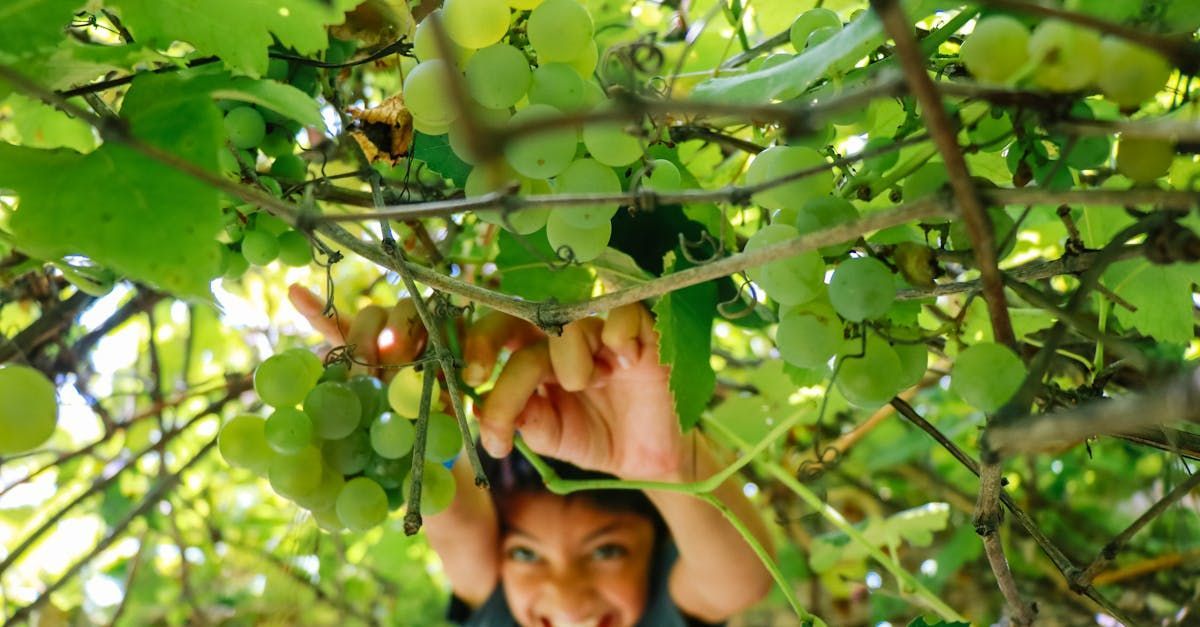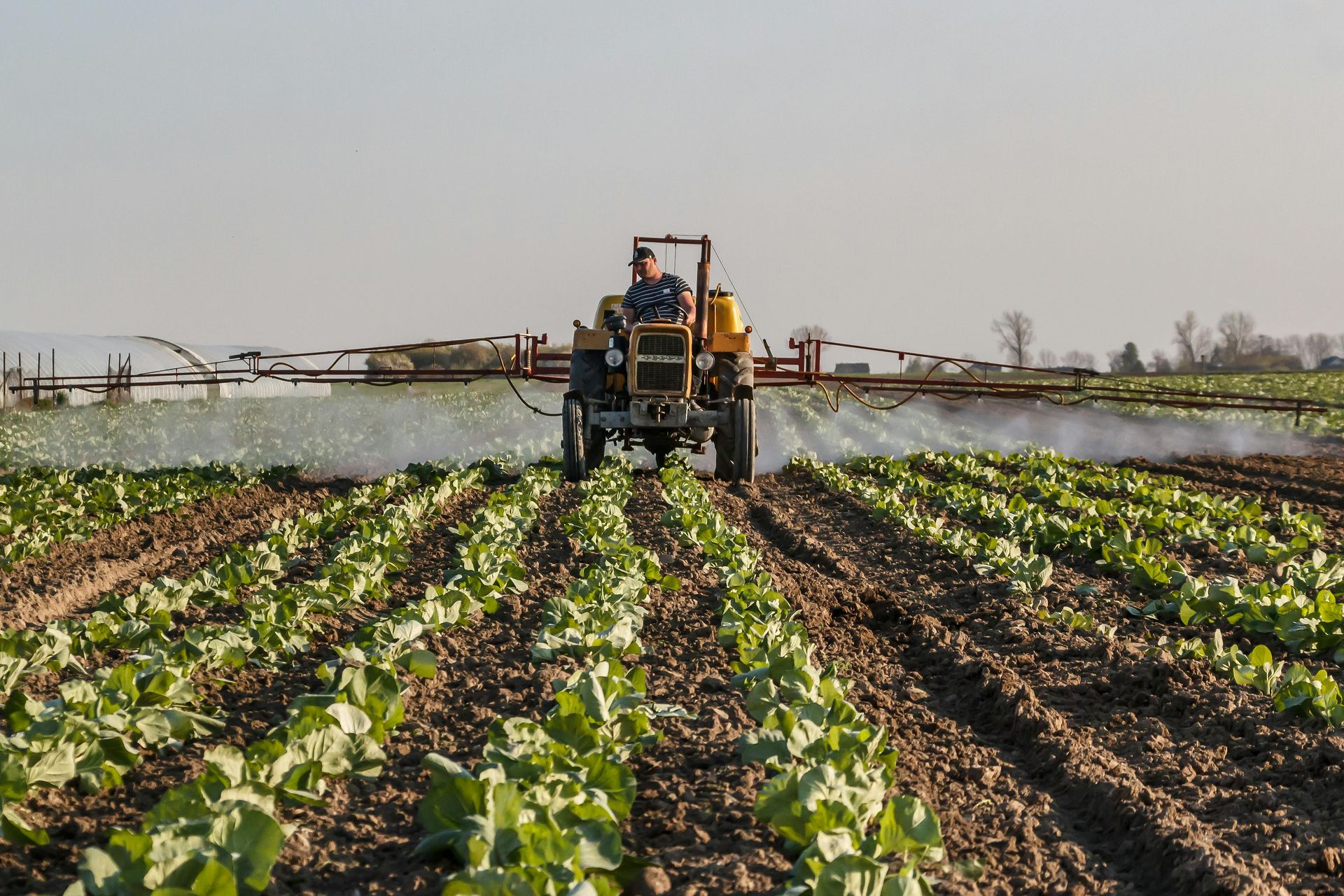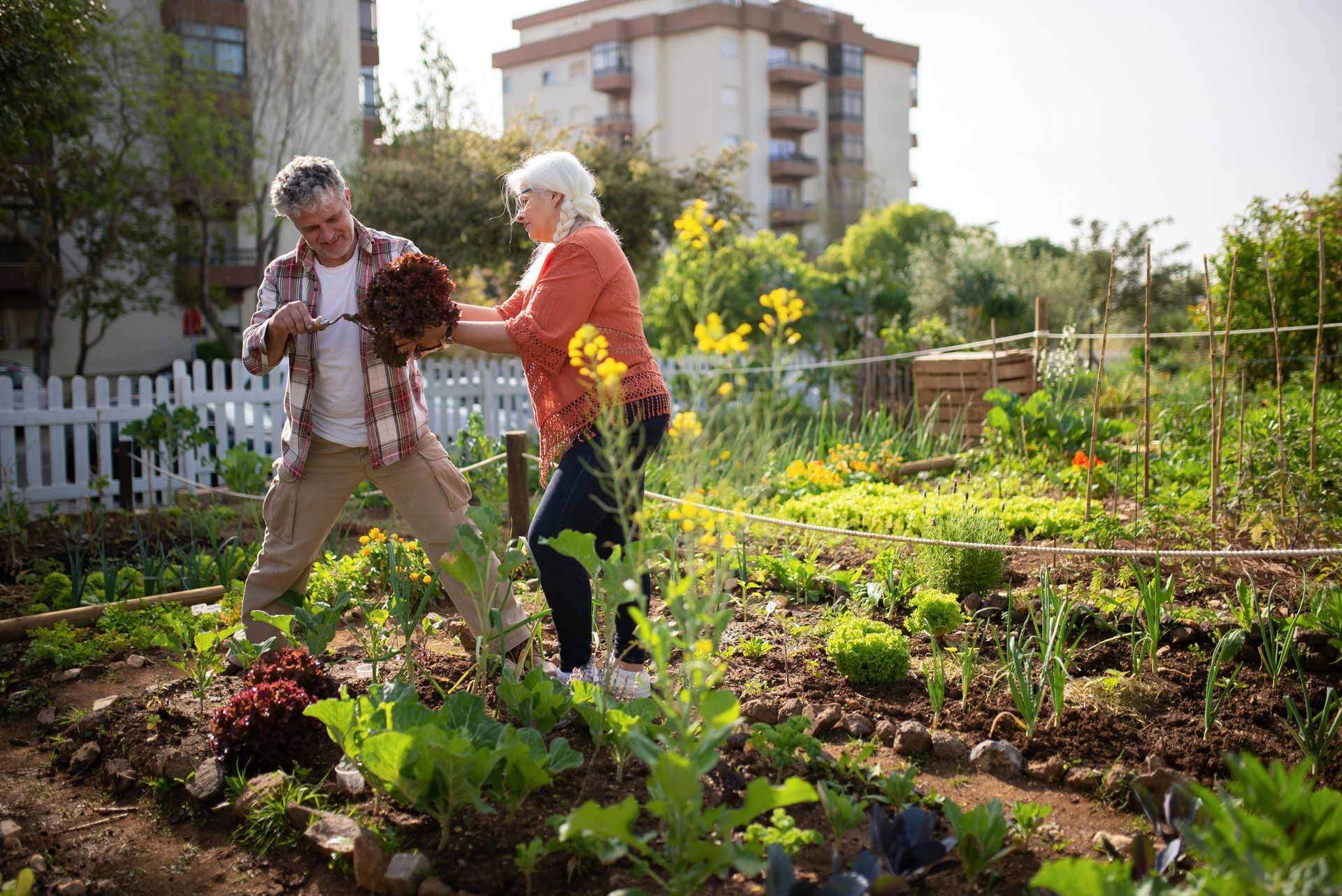How to Grow Grapes on a vine
Step-by-Step Instructions for Home Gardeners

Growing grapes at home can be a delightful and rewarding endeavor. Not only do homegrown grapes offer fresher and more flavorful fruit, but they also provide a sense of satisfaction and connection to nature. Whether you dream of making your own wine, enjoying fresh grapes straight from the vine, or creating homemade jams and jellies, this guide will walk you through the entire process.
Choosing the Right Grape Variety
Selecting the right grape variety is crucial for success. Different grape varieties thrive in different climates, so it's important to choose one that suits your local conditions.
Types of Grapes for Different Climates
Grapes are broadly categorized into table grapes and wine grapes. Table grapes, like Thompson Seedless and Concord, are ideal for fresh eating. Wine grapes, such as Cabernet Sauvignon and Chardonnay, are perfect for making wine.
Table Grapes vs. Wine Grapes
When choosing your grape variety, consider what you plan to do with the harvest. If you want to enjoy fresh grapes, go for table varieties. If winemaking is your goal, select wine grape varieties that are suitable for your climate.
Preparing the Site
Selecting the Perfect Location
Grapevines need plenty of sunlight—at least six to eight hours a day. Choose a site with good air circulation and well-drained soil to prevent diseases and root rot.
Soil Preparation and Testing
Before planting, test your soil to determine its pH and nutrient levels. Grapevines prefer slightly acidic to neutral soil (pH 5.5-7.0). Amend the soil as needed to create the ideal growing conditions.
Soil Testing and the Benefits of the Daubney Extraction Method
Soil testing is a fundamental practice in agriculture and gardening, providing critical insights into the nutrient content, pH levels, and overall health of the soil. One of the advanced techniques highlighted in "Ask The Plant" by Charles Walters is the Daubney extraction method. This method involves using a mild acid solution to extract nutrients from the soil, closely mimicking the root exudates of plants. The Daubney extraction method is particularly beneficial because it measures the nutrients available to plants in real-time, rather than the total nutrient content of the soil, which may include elements not readily accessible to plants. This targeted approach helps identify deficiencies and excesses that directly impact plant health. It provides a more accurate representation of the soil’s fertility status, allowing for precise adjustments in fertilization practices. This leads to optimized nutrient management, reducing the risk of over-fertilization, which can harm plants and the environment. Additionally, by understanding the immediate availability of nutrients, gardeners can tailor their amendments to meet the specific needs of their crops at different growth stages, promoting vigorous growth and higher yields. Implementing the Daubney extraction method in soil testing ensures that grapevines receive the necessary nutrients for optimal development, enhancing the overall productivity and quality of the vineyard. TPSL® Grape Specific Soil Test
Conducting a Soil Test
- Collect soil samples from multiple locations in your vineyard.
- Mix the samples together to get a composite sample.
- Send the composite sample to a soil testing lab.
- Review the results, focusing on pH, nutrient levels, and organic matter content.
Interpreting Soil Test Results
The results will indicate the levels of nitrogen, phosphorus, potassium, and other essential nutrients. Based on these results, you can make informed decisions about soil amendments and fertilizers.
Trellis and Support Structures
Grapevines require support structures to grow properly. Build a sturdy trellis or arbor to support the vines as they mature.
Planting Grapevines
When to Plant Grapevines
The best time to plant grapevines is in the spring, after the last frost has passed. This gives the young plants a full growing season to establish their roots.
Step-by-Step Planting Guide
- Dig a hole twice as wide and deep as the root ball.
- Mix compost or organic matter into the soil.
- Place the vine in the hole, spreading out the roots.
- Fill the hole with soil, ensuring the root crown is at ground level.
- Water thoroughly and mulch around the base.
Caring for Young Vines
Watering Requirements
Young grapevines need regular watering to establish their roots. Water deeply but infrequently to encourage deep root growth.
Mulching and Weed Control
Apply mulch around the base of the vines to retain moisture and suppress weeds. Keep the area around the vines free of weeds to reduce competition for nutrients.
Protecting Vines from Pests and Diseases
Use organic or chemical methods to protect your vines from common pests like aphids and caterpillars. Monitor the vines regularly for signs of disease and treat promptly.
Training and Pruning Grapevines
Understanding Grapevine Growth
Grapevines produce fruit on one-year-old wood. Proper training and pruning are essential to ensure a productive harvest.
Training Methods for Different Trellis Systems
Different trellis systems, such as the vertical shoot positioning (VSP) or the Geneva double curtain, require different training techniques. Choose the method that best suits your space and goals.
Pruning Techniques for Maximum Yield
Prune your vines in late winter or early spring. Remove any dead or weak wood, and focus on creating a structure that promotes good air circulation and light penetration.
Fertilizing and Nutrient Management
Essential Nutrients for Healthy Grapevines
Grapevines need nitrogen, phosphorus, and potassium, along with trace minerals like magnesium and iron. Conduct soil tests to determine nutrient needs and apply fertilizers accordingly.
Plant Sap Testing
In "Ask The Plant" by Charles Walters, plant sap testing is highlighted as a crucial method for understanding the real-time nutritional status of plants. Unlike traditional tissue testing, which analyzes the mineral content in dried plant matter, sap testing examines the fluid extracted from the plant's vascular system. This approach provides immediate insights into the nutrients currently available to the plant, allowing for more accurate and timely adjustments to fertilization practices. Walters emphasizes that sap testing can reveal deficiencies and imbalances that might not yet be visible through visual inspection or standard soil tests. By regularly monitoring sap composition, gardeners can fine-tune their nutrient management strategies, ensuring that plants receive the right balance of nutrients at critical growth stages. This proactive approach leads to healthier plants, improved yields, and higher quality produce. Implementing sap testing in your grape cultivation can help identify and correct nutrient issues before they affect vine health and fruit production, ensuring a thriving vineyard and a bountiful harvest. ASK THE PLANT® Analysis - for Grapes
Organic vs. Chemical Fertilizers
Both organic and chemical fertilizers can be effective. Organic options like compost and manure improve soil health over time, while chemical fertilizers provide immediate nutrient availability.
Managing Pests and Diseases
Common Pests and How to Control Them
Grapevines can be affected by pests like grape berry moths and spider mites. Use integrated pest management (IPM) techniques to control infestations.
Disease Prevention and Treatment
Common grapevine diseases include powdery mildew and black rot. Prevent diseases by ensuring good air circulation, proper pruning, and using fungicides if necessary.
Watering and Irrigation
Establishing a Watering Schedule
Grapevines require consistent moisture, especially during the growing season. Water deeply once a week, adjusting based on weather conditions.
Drip Irrigation vs. Overhead Watering
Drip irrigation is ideal for grapevines as it delivers water directly to the roots, reducing the risk of disease. Overhead watering can increase the risk of fungal infections.
Harvesting Grapes
When and How to Harvest
Grapes are ready to harvest when they are fully colored and taste sweet. Use pruning shears to cut clusters from the vine, being careful not to damage the plant.
Post-Harvest Care
After harvesting, remove any fallen leaves and debris from the vineyard to prevent disease. Prune the vines and prepare them for the next growing season.
Storing and Using Your Harvest
Proper Storage Techniques
Store harvested grapes in a cool, dry place. For longer storage, grapes can be dried into raisins or frozen.
Seasonal Care and Maintenance
Spring, Summer, Fall, and Winter Care
Each season requires different care techniques. In spring, focus on pruning and training. Summer involves regular watering and pest control. Fall is for harvesting and preparing for winter, while winter care includes pruning and protecting vines from cold.
Preparing Vines for Winter
In colder climates, protect your vines by mulching heavily around the base and covering them with burlap or other protective materials.
Troubleshooting Common Issues
Identifying and Solving Common Problems
Common issues include poor fruit set, leaf yellowing, and vine dieback. Address these problems by adjusting watering, improving soil health, and using appropriate pest and disease controls.
Expert Tips for a Thriving Vineyard
Experienced growers recommend regular soil testing, maintaining proper vine spacing, and using organic practices whenever possible for a healthy and productive vineyard.
Frequently Asked Questions
FAQ 1: How long does it take to grow grapes?
It typically takes three years for grapevines to produce their first full harvest, though you may see a small amount of fruit in the second year.
FAQ 2: Can I grow grapes in a small backyard?
Yes, grapevines can be trained to grow on fences or small trellises, making them suitable for small spaces.
FAQ 3: What are the best grape varieties for beginners?
Concord and Thompson Seedless are excellent choices for beginners due to their disease resistance and ease of care.
FAQ 4: How do I know when my grapes are ready to harvest?
Grapes are ready to harvest when they are fully colored and taste sweet. The seeds should be brown, not green.
FAQ 5: What should I do if my grapevines aren't producing fruit?
Ensure your vines are receiving enough sunlight, water, and nutrients. Proper pruning and pest control are also essential for fruit production.
Growing grapes at home is a fulfilling and enjoyable hobby that can yield delicious results. With the right knowledge and care, you can cultivate a thriving vineyard in your own backyard. Start small, be patient, and soon you'll be enjoying the fruits of your labor.



